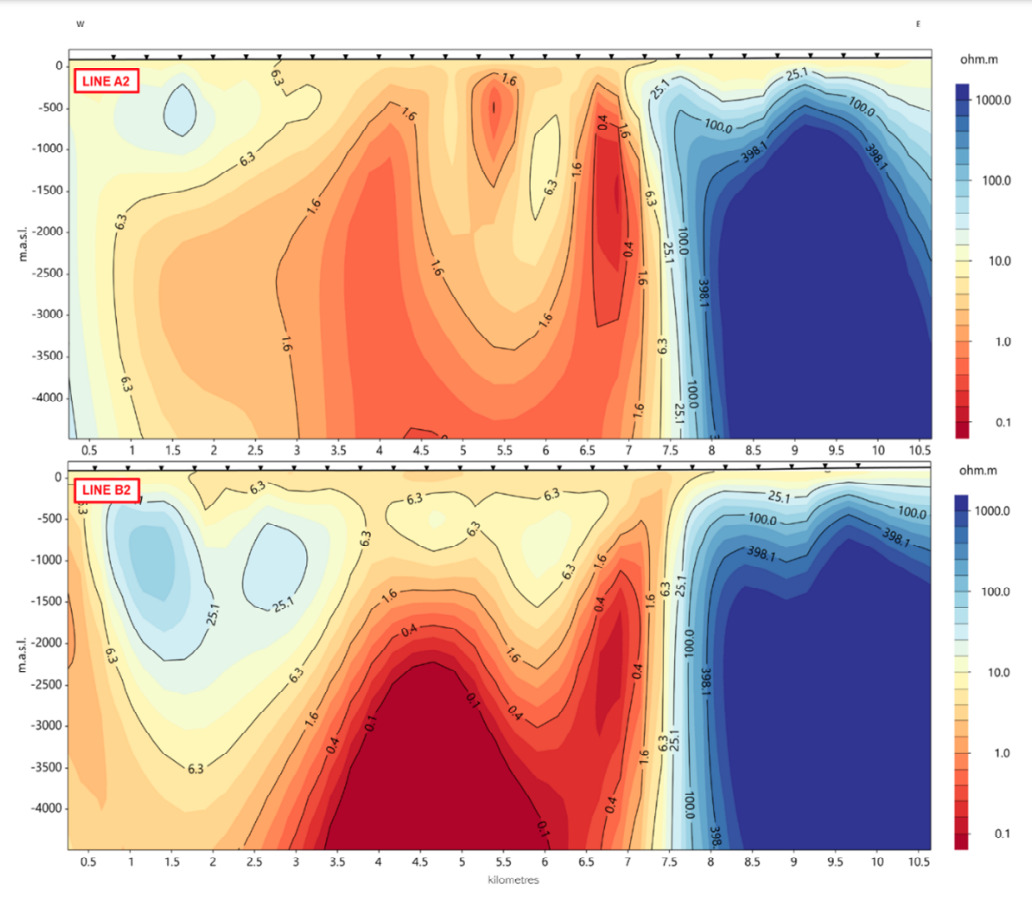You might be interested in
Mining
ROUND UP: ASX explorers in QLD striking while the copper iron’s hot
Mining
Fortescue is dialled in to critical minerals; here's some areas the major miner is tuned into
Mining
Mining
Special Report: A recent geophysical survey at Strategic Energy Resources’ Mundi project in NSW has unlocked two promising, shallow conductive anomalies, which will be the focus of upcoming drilling later this year.
Strategic Energy Resources’ (ASX:SER) Mundi project spans over 1,300km2 of the Curnamona province, known for its iron oxide copper-gold (IOCG) mineral system and ‘Broken Hill type’ lead-zinc-silver deposits.
The project area captures the shallowest portion of the Curnamona Conductor (CC), a crustal-scale conductivity anomaly that has strong similarities to MT conductivity anomalies interpreted to be associated with IOCG mineralisation in South Australia’s Gawler Craton, including the supergiant Olympic Dam deposit.
Last year a 95-station MT survey was carried out over the shallowest portion of the interpreted CC anomaly that was partially supported by a $50,000 grant from Round 5 of the NSW Government’s New Frontiers exploration program.
Modelling defined a large, high-intensity conductive anomaly plunging to the south, with the shallowest portion of the conductor less than 700m below surface between the two central lines of the survey.

A follow up infill survey has now wrapped up after revealing another two “intense” shallow conductive anomalies.
The revised modelling shows that the intense deep-rooted conductor separates into two discrete conductive anomalies at ~3km depth.
SER says the conductors persist to depths of <500m and potentially as shallow as 200m below surface, although the electrical response of shallower basement in the models is partially obscured by the effect of ~100m of conductive overburden.
Exploration will now focus on further geophysical exploration on the two identified anomalies to define potential drillable targets by the end of 2024.
“This infills survey has vastly improved our understanding of the highly conductive body,” SER managing director Dr David DeTata says.
“With this new information, planning has already begun for a series of additional geophysical surveys which will define future drill targets.
“Progress to this point has taken under a year since securing landholder access and is indicative of SER’s broader strategy based on a science driven approach to project generation and rapid exploration with no fear of failure.”
This exploration work may include a ground electromagnetic (GEM) survey scheduled for the second half of 2024 to further resolve the depths, thicknesses, orientations and geometries of individual conductive targets that may be present within the broader anomalies.
The GEM data will be interpreted and constrained through the collection of passive seismic and additional gravity data across the MT survey area with researchers at the University of Adelaide.
This article was developed in collaboration with Strategic Energy Resources, a Stockhead advertiser at the time of publishing.
This article does not constitute financial product advice. You should consider obtaining independent advice before making any financial decisions.